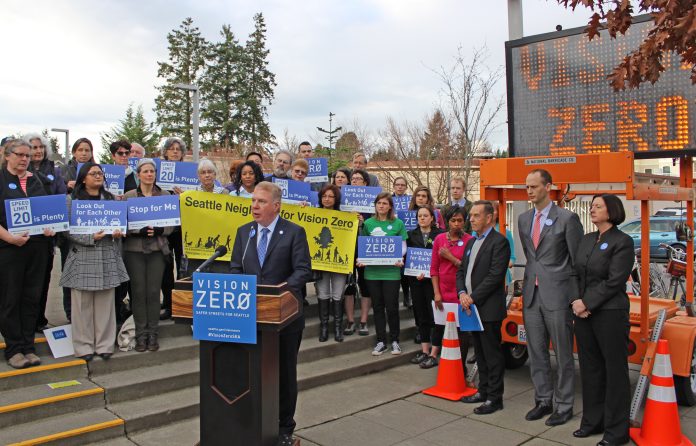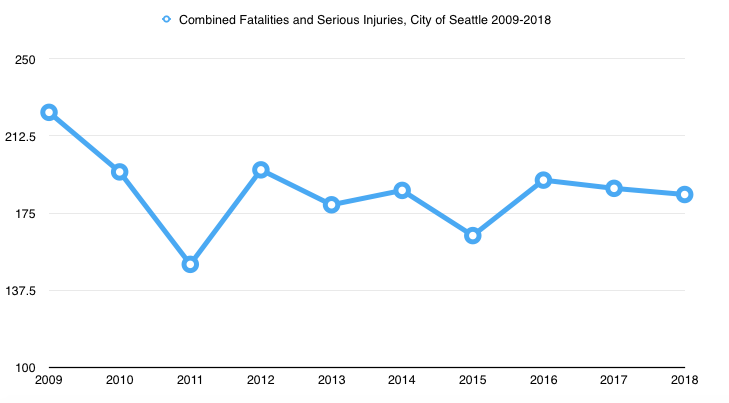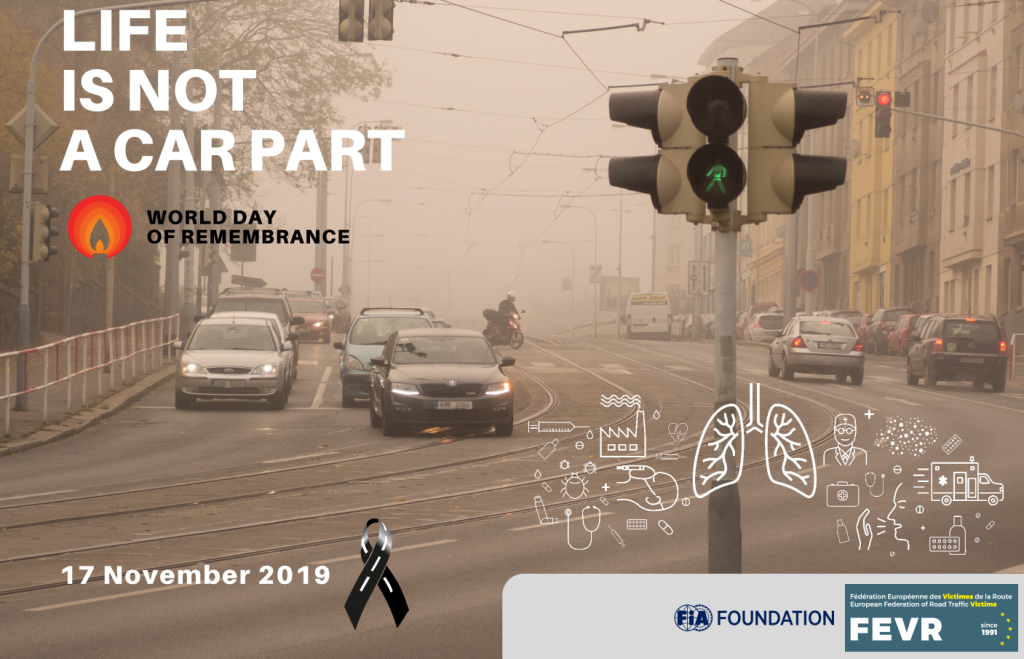
In a few short months, Seattle will mark five years since the February day that its Mayor stood in front of advocates and staff and made a commitment to ending all fatalities and serious injuries that are caused by vehicle traffic. With the goal right in the program name, Seattle signing the Vision Zero pledge happened around the same time that cities like Washington, D.C. made the commitment, and the nice round date of 2030 was a full fifteen years away.

What happened next was a small push in the right direction, mostly, in terms of transportation spending. The Move Seattle levy, passed the same year, invested more in “vision zero corridors,” “safe routes to schools,” and bike facilities then had been done before. But serious collision numbers have mostly stayed unchanged.
The collision database that Seattle Department of Transportation (SDOT) maintains records 168 collisions resulting in a death or serious injury for the first 10 months of this year, in 304 days. That’s an incident every 43 hours, on average. The gap in distance between something happening never and happening more frequently than every other day is the distance that our Vision Zero policy needs to cover, and nothing less.
On this level, the numbers would be almost meaningless if they didn’t represent the unfathomable impact that traffic violence has on the lives of the people in our city.
There are not very many issues with which there is more agreement among the Seattle City Councilmembers who will remain in council chambers next year and the newly elected leaders who will join them than on the issue of Vision Zero. Of the 6 district councilmembers-elect who completed The Urbanist‘s candidate questionnaire, every single one of them said they support the goal.
District 6’s incoming Councilmember Dan Strauss takes over in the position held by Mike O’Brien, the current Vision Zero bulwark on council. He told us that he supports the policy and that “achieving Vision Zero starts with building a citywide network of protected bike lanes and proactive street design.” He cited a radical vision of removing cars from Ballard Avenue and turning it into a pedestrian corridor.
District 5’s Debora Juarez was pretty clear in her support for reversing the trend: “Legislative strategies are a start and major component, but we also need to have a cultural shift around how people drive.” Changing culture at City Hall around street safety that can radiate out through all the departments–and particularly SDOT–is key.
Yet Juarez also told Erica C. Barnett that “Of course I want people to ride bikes and of course we want people to be safe, but we have to recognize, as you know, this is Seattle and there’s hills and there’s dark weather and there’s cars.” She compared putting a bike lane on Lake City Way to putting RapidRide on Aurora Ave N, an odd analogy considering how successful ridership growth on the E Line has been. Lake City Way last year had 64 collisions along it that resulted in injury, four where someone was seriously injured. There were another 60 that resulted in “only” property damage. Keeping Lake City Way as it is, with minor changes every now and then after tragedy strikes, is not an option.
A majority of the city’s legislators have been in support of Vision Zero in the past, and the City has still stagnated. Undoubtedly this is because we have not yet had a Mayor who is ready to grapple with the radical goal of Vision Zero and sweep aside barriers to making it a reality. It’s not clear whether Mayor Durkan has even verbally recommitted the city to the cause and the reality on the ground shows that she has not. The reason that safe streets advocates were so galvanized by the reversal by her office of the improvements on 35th Avenue NE was that the episode so clearly demonstrated a lack of commitment in the face of public opinion.
Ultimately, Vision Zero is not an idle commitment. Cities in the US may have treated it as one over the past decade, but it is a radical vision of the conversion of our cities to places where lives are not devastated by traffic violence. Next year will see a brand new city council that has almost-full unanimity that they believe it can be done. Time is running out and lives are literally depending on it.
World Day of Remembrance for Victims of Traffic Violence is this Sunday, November 17.

Ryan Packer has been writing for The Urbanist since 2015, and currently reports full-time as Contributing Editor. Their beats are transportation, land use, public space, traffic safety, and obscure community meetings. Packer has also reported for other regional outlets including BikePortland, Seattle Met, and PubliCola. They live in the Capitol Hill neighborhood of Seattle.

